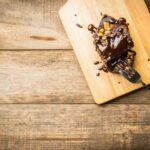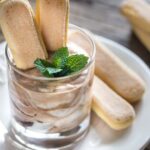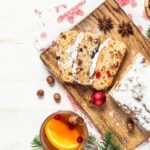Are you looking to learn how to decorate a birthday cake at home? Whether you’re a baking novice or a seasoned pro, there’s something magical about creating a homemade birthday cake. From choosing the perfect cake base to mastering the art of frosting and adding creative decorations, the process of making a personalized birthday cake is both rewarding and fun.
In this article, we’ll explore the essential tools and equipment for decorating, as well as tips for choosing the right cake base – from classic vanilla to decadent chocolate. We’ll also delve into the world of frosting, including buttercream, whipped cream, and fondant, and discuss creative cake decorating techniques such as piping, fondant sculpting, and edible decorations. Additionally, we’ll explore how to personalize your cake with colors, themes, and edible images.
Whether you’re looking to add layers and tiers for a “wow” factor or troubleshoot common problems that arise during the decorating process, we’ve got you covered. And once your masterpiece is complete, we’ll discuss the final touches of presentation and display.
Ultimately, our goal is for you to celebrate with your homemade birthday cake – making memories and enjoying the fruits of your labor. So let’s get started on creating a truly special dessert for your next celebration.
Essential Tools and Equipment for Decorating
When it comes to decorating a birthday cake at home, having the right tools and equipment is essential for achieving professional-looking results. Whether you’re a beginner or a seasoned baker, there are certain items that are indispensable for creating beautifully decorated cakes.
Baking Essentials
Before you can start decorating your cake, you’ll need some basic baking essentials such as cake pans, mixing bowls, an electric mixer, and measuring cups and spoons. These tools are necessary for preparing the cake base and getting it ready for decoration.
Decorating Tools
To take your cake decorating to the next level, investing in specific tools for this purpose is crucial. Some essential decorating tools include offset spatulas for smoothing frosting, piping bags and tips for creating decorative designs, a turntable for easy frosting application, and a bench scraper for achieving clean edges. Additionally, consider purchasing a cake leveler or serrated knife to slice your cake layers evenly.
Specialty Equipment
Depending on the type of decorations you’d like to create, there are specialty equipment and tools that may come in handy. For instance, if you’re planning to work with fondant, investing in a rolling pin with guides can help achieve an even thickness. Edible image printers can also be useful for adding personalized images to your cake.
By equipping yourself with these essential tools and equipment for cake decorating, you’ll be well-prepared to bring your creative vision to life and impress your loved ones with a stunning homemade birthday cake.
Choosing the Right Cake Base
When it comes to decorating a birthday cake at home, choosing the right cake base is essential to set the stage for your creative design. From classic vanilla to decadent chocolate, the options are endless and can greatly influence the overall look and taste of your masterpiece. Here are some popular options for cake bases that you can consider:
- Classic Vanilla: A timeless choice that serves as a perfect canvas for any decorations. Whether you opt for a simple round cake or a multi-tiered creation, vanilla cake provides a versatile and delicious foundation.
- Decadent Chocolate: For chocolate lovers, a rich and moist chocolate cake can be an irresistible option. With its deep flavor and indulgent appeal, chocolate cake pairs well with various frosting and decorative elements.
- Funfetti or Rainbow: Adding sprinkles or food coloring to vanilla cake batter can result in a vibrant and festive funfetti or rainbow cake. This playful twist on a classic base adds a pop of color to your birthday celebration.
No matter which cake base you choose, it’s important to consider the preferences of the birthday celebrant as well as any dietary restrictions or allergies of your guests. Additionally, keep in mind that different types of cakes may require specific baking techniques and adjustments in decorating methods. By selecting the right cake base, you’ll be on your way to creating a personalized and delightful birthday treat that everyone will enjoy.
Mastering the Art of Frosting
When it comes to decorating birthday cakes at home, choosing the right frosting is crucial to achieving the desired look and taste. There are several options to consider, each with its own unique characteristics and techniques. Here are some popular choices for frosting:
1. Buttercream: Buttercream is a classic choice for cake frosting. It is made with butter, powdered sugar, and flavorings such as vanilla or chocolate. Buttercream is versatile and easy to work with, making it ideal for piping decorations, creating smooth finishes, and adding texture to the cake.
2. Whipped Cream: For those looking for a lighter and airy option, whipped cream is an excellent choice. Made with heavy cream and sugar, whipped cream can be flavored with extracts or liqueurs for added depth of flavor. It is perfect for those who prefer a less sweet frosting option.
3. Fondant: Fondant has become increasingly popular for its ability to create smooth and flawless finishes on cakes. It is a pliable icing that can be rolled out and draped over the cake for a sleek appearance. Fondant also provides a blank canvas for intricate decorations and sculpting.
Each type of frosting has its own set of challenges and benefits, so it’s important to consider the desired look and taste of the finished product when selecting the right one for your homemade birthday cake. Experimenting with different frostings will allow you to find the perfect match for your baking style and preferences.
Ultimately, mastering the art of frosting is about practice and experimentation. Whether you choose buttercream, whipped cream, or fondant, honing your skills through trial and error will lead to beautiful and delicious homemade birthday cakes that will impress your family and friends.
Creative Cake Decorating Techniques
Piping Techniques
One of the most common and versatile cake decorating techniques is piping. Using a piping bag and different tips, you can create beautiful designs and textures on your cake. From simple borders to intricate floral patterns, piping allows for endless creativity. Some popular piping tips include round tips for writing or outlining, star tips for creating rosettes and shells, and petal tips for intricate flower designs.
Fondant Sculpting
Fondant is a popular choice for creating unique and stylish designs on cakes. This versatile sugar paste can be rolled out and draped over a cake for a smooth finish, or it can be shaped and sculpted into 3D figures, flowers, or other decorations.
To work with fondant, make sure to have a clean surface to roll it out on, as well as cornstarch or powdered sugar to prevent sticking. Additionally, invest in quality fondant tools such as rolling pins, cutters, and sculpting tools to help bring your creative visions to life.
Edible Decorations
In addition to traditional frosting and fondant decorations, there are a wide variety of edible embellishments that can take your birthday cake to the next level. Consider using edible glitter or luster dust for a touch of sparkle, edible pearls or dragees for an elegant touch, or even edible printed images to add personalized flair. With the right combination of these decorative elements, you can transform a simple homemade cake into a stunning centerpiece for any celebration.
Personalizing With Colors, Themes, and Edible Images
When it comes to decorating a birthday cake at home, personalization is key. One of the simplest ways to add a personal touch is through the use of colors. Whether it’s a favorite color or a theme-related hue, selecting the right color scheme can vastly impact the overall look of your cake. Consider using gel food coloring to achieve vibrant and consistent shades in your frosting and decorations.
Another way to personalize your cake is by choosing a specific theme or design that resonates with the birthday celebrant. Whether it’s their favorite character, hobby, or interest, incorporating a thematic element can instantly elevate the visual appeal of your creation. From princess castles to sports-themed designs, the possibilities are endless when it comes to themed cake decoration.
In addition to coloring and themes, edible images have also become a popular choice for customizing birthday cakes. Using safe and edible ink, you can now easily transfer photographs or custom designs onto your cake’s surface, creating a truly unique and memorable centerpiece for the celebration.
| Personalization Element | Description |
|---|---|
| Colors | Choosing vibrant colors using gel food coloring for frosting and decorations |
| Themes | Incorporating specific themes or designs related to the celebrant’s interests |
| Edible Images | Using safe edible ink to transfer photographs or custom designs onto the cake’s surface |
Wow Factor
Adding layers, tiers, and fillings to your homemade birthday cake can take it from ordinary to extraordinary. Creating a multi-layered cake not only adds visual appeal but also allows for different flavors and textures to be incorporated into the dessert. When adding layers, it’s important to consider the stability of the cake and the balance of flavors.
For those looking to add tiers to their birthday cake, it’s essential to have sturdy support systems in place to prevent any collapsing. Using proper dowels or supports between each tier is crucial for a stable and secure cake structure. Tiers can also add an elegant and grandiose touch to the presentation of the cake, making it a memorable centerpiece for any celebration.
Fillings are another way to elevate the flavor profile of a birthday cake. Whether it’s fruit preserves, chocolate ganache, or creamy custard, fillings can add extra moisture and sweetness to each bite. It’s important to consider the consistency of the filling in relation to the texture of the cake to ensure a harmonious combination.
By mastering the art of adding layers, tiers, and fillings, you can create a show-stopping birthday cake that not only looks impressive but also delights with its delicious taste and texture. With careful planning and execution, these elements can transform a simple homemade cake into a masterpiece that will be cherished by all who indulge in it.
Troubleshooting and Tips for Beginners
Dealing with mistakes and achieving professional results when decorating a birthday cake at home can be a challenging but rewarding experience. As a beginner, it’s important to remember that even the most experienced bakers encounter mishaps from time to time. The key is to have some troubleshooting tips in your back pocket to help salvage the situation and still achieve a beautiful and delicious cake.
One common issue that beginners may face is uneven frosting or crumbly layers. To avoid this, it’s crucial to properly chill your cake layers before frosting and applying multiple thin layers of frosting instead of one thick layer. If you do encounter this problem, use a bench scraper or offset spatula dipped in hot water to smooth out the frosting and create a more polished finish.
Another challenge for beginners is piping intricate designs or lettering onto the cake. One tip for achieving professional-looking piping is to practice on parchment paper before attempting it directly onto the cake. This allows you to perfect your technique and gain confidence before working on your actual cake.
Lastly, if you find that your fondant is cracking or tearing while covering the cake, try kneading it more thoroughly and rolling it out evenly to the desired thickness. Additionally, using a small amount of shortening on your hands can help prevent sticking and make it easier to work with the fondant. With these tips in mind, beginners can navigate through common mistakes and ultimately achieve impressive results when decorating their homemade birthday cakes.
The Final Touch
When it comes to presenting and displaying your homemade birthday cake, there are several key factors to consider in order to truly showcase your masterpiece. The final touch is just as important as all the effort that went into baking and decorating the cake. One of the most crucial elements in presenting a birthday cake is choosing the right cake stand or platter. A beautiful cake stand can elevate the entire look of the cake and make it stand out.
In addition to choosing the right cake stand or platter, another important aspect of presenting your birthday cake is considering the surroundings. Make sure to clean and clear the area around where you plan to display the cake.
Keep in mind that lighting can also play a big role in how your cake looks when it is on display. If possible, place your cake in an area with good lighting so that all of your hard work can be fully appreciated.
Lastly, consider adding some extra decorative elements to really make your homemade birthday cake shine. Fresh flowers, colorful sprinkles, or edible glitter can be used to add an extra special touch to your creation. These additional decorative elements will not only enhance the overall look of the cake but also add a personalized touch that reflects the personality of the birthday celebrant.
| Element | Description |
|---|---|
| Cake Stand or Platter | A beautiful stand that complements the cake |
| Lighting | Good lighting can enhance how the cake looks on display |
| Decorative Elements | Fresh flowers, sprinkles, or edible glitter for added flair |
Celebrating With Your Homemade Birthday Cake
In conclusion, decorating a birthday cake at home can be a truly rewarding experience. Not only does it allow you to unleash your creativity and personal touch, but it also gives you the opportunity to create lasting memories with your loved ones. Whether you have opted for a classic vanilla base or an indulgent chocolate one, the process of adding layers, tiers, fillings, and edible decorations can be both fun and fulfilling.
Furthermore, the act of celebrating with your homemade birthday cake goes beyond simply indulging in a delicious dessert. It is about coming together with family and friends to mark a special occasion and create cherished moments. The pride and satisfaction of presenting your masterpiece to the guest of honor and seeing their delight is incomparable.
Finally, as you continue to hone your skills in cake decorating, remember that practice makes perfect. Don’t be disheartened by any mistakes along the way-these are simply learning opportunities that will ultimately contribute to achieving professional results.
So, go ahead, put on that apron, gather your tools and ingredients, and embark on the journey of creating beautiful birthday cakes that will leave a lasting impression on everyone who gets to enjoy them. Cheers to making memories and enjoying the fruits of your labor.
Frequently Asked Questions
How to Decorate a Cake for Beginners?
Decorating a cake for beginners can be a fun and creative process. Start with a simple design or pattern and use easy-to-use tools like piping bags, icing tips, and spatulas to add decorations.
Consider using edible flowers, sprinkles, or colorful frosting to enhance the look of your cake. And don’t forget about utilizing stencils, cookie cutters, or even fresh fruit to create unique designs.
What Can I Use to Decorate My Birthday Cake?
When decorating your birthday cake, you have plenty of options to choose from. You can use buttercream frosting to pipe borders or write messages on the cake.
Edible markers, chocolate ganache, fondant cutouts, or even edible glitter can also be used to embellish the cake’s appearance. Additionally, consider adding themed decorations such as figurines, candles, or personalized cake toppers that reflect your interests or hobbies.
How Do You Make a Plain Cake Look Fancy?
To make a plain cake look fancy, consider adding some extra touches that elevate its appearance. One simple way is to layer the cake with fillings like jam, curd, or pastry cream before icing it – this not only adds flavor but also visual interest when sliced.
Experiment with various textures and colors by incorporating different types of frosting (buttercream, cream cheese, ganache), using decorative piping techniques, or applying edible luster dust for a shimmery finish. Lastly, consider garnishing the cake with items like fresh berries, chocolate curls/shavings, or even gold leaf for an impressive final touch.

Welcome to my blog about home and family. This blog is a place where I will share my thoughts, ideas, and experiences related to these important topics. I am a stay-at-home mom with two young children. I hope you enjoy reading it! and may find some helpful tips and ideas that will make your home and family life even better!





